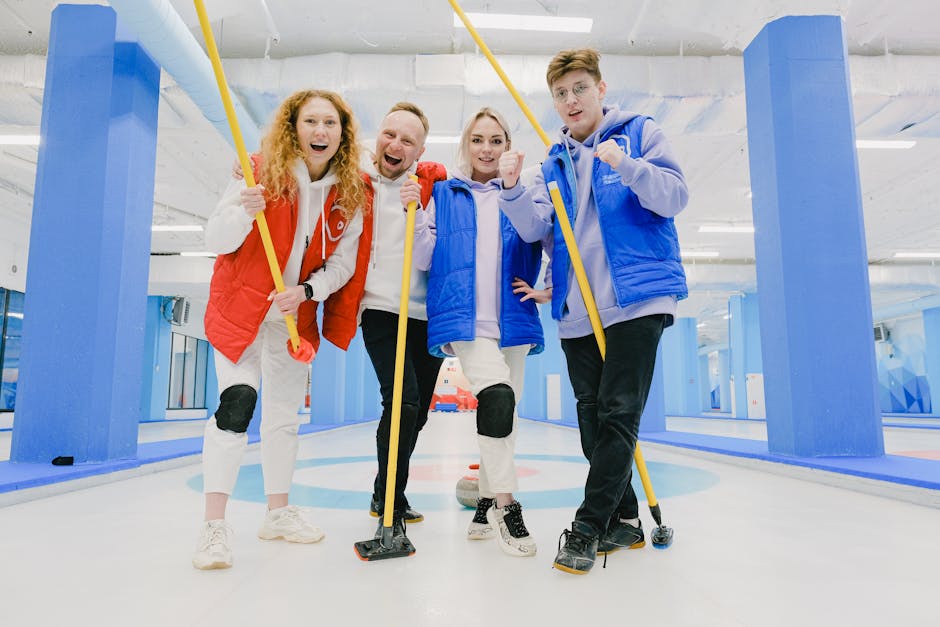High-performing teams in sports and recreation are not simply collections of talented individuals; they are cohesive units where individual strengths synergistically contribute to collective success. Building and maintaining this cohesion requires a multifaceted approach, encompassing strategic leadership, effective communication, shared goals, and a positive team environment. Understanding and implementing these strategies significantly improves performance and fosters a rewarding experience for all involved.
A cornerstone of team cohesion is establishing clear and shared goals. Ambiguity regarding objectives breeds uncertainty and undermines collective effort. Instead, effective teams define specific, measurable, achievable, relevant, and time-bound (SMART) goals. This clarity ensures everyone understands their role and how their contributions directly impact the overall objective. Furthermore, the process of collaboratively setting these goals itself enhances buy-in and fosters a sense of shared ownership. Teams benefit from regular review sessions to track progress, adjust strategies if necessary, and reaffirm commitment to the established goals.
Communication, both verbal and nonverbal, serves as the lifeblood of any successful team. Open and honest dialogue is paramount. Coaches and team leaders should create a safe space where individuals feel comfortable expressing their opinions, concerns, and ideas without fear of retribution. Active listening is equally crucial; team members must actively listen to each other to understand perspectives and foster mutual respect. Effective communication extends beyond formal meetings; it includes informal interactions, encouraging a culture of feedback and support. Nonverbal cues, such as body language and tone of voice, also play a significant role; being mindful of these subtle cues can prevent misinterpretations and build stronger relationships. Regular team meetings, both formal and informal, can enhance open communication and problem-solving.
Team leadership plays a pivotal role in fostering cohesion. Effective leaders cultivate trust, inspire motivation, and delegate responsibility effectively. Authoritarian leadership styles can often be detrimental, stifling individual creativity and hindering open communication. Instead, a democratic or transformational leadership approach encourages participation, empowers individuals, and fosters a sense of shared responsibility. Leaders who demonstrate empathy, understanding, and genuine care for their team members build stronger relationships and foster a more positive team environment. Furthermore, skilled leaders understand the strengths and weaknesses of individual team members and leverage these effectively, maximizing individual and collective performance.
Cultivating a positive team environment is crucial for enhancing cohesion and success. Positive reinforcement, celebrating both individual and collective achievements, and actively promoting a culture of inclusivity and respect significantly contributes to team morale. Building team camaraderie through social events outside of training or competition can also help strengthen bonds and enhance trust. These social interactions provide opportunities for informal communication and bonding, promoting a sense of unity and mutual support. However, it is crucial to ensure inclusivity in these social activities to avoid inadvertently alienating members of the team. Strategies to foster inclusivity include seeking input from all members when planning events and ensuring everyone feels comfortable and welcome.
Conflict resolution is an inevitable aspect of team dynamics, and how a team handles conflict significantly impacts cohesion. Teams should establish clear mechanisms for conflict resolution, emphasizing open communication, active listening, and collaborative problem-solving. Coaches and leaders should model effective conflict resolution strategies, demonstrating respect for differing opinions and fostering compromise. Avoiding avoidance or suppression of conflict is crucial; addressing conflicts directly and constructively prevents resentment and maintains a healthy team environment. Training in conflict resolution techniques can significantly benefit team members and equip them with the tools necessary to navigate disagreements effectively.
Physical and mental conditioning are inseparable components of team success. Physical fitness directly impacts performance; therefore, establishing a robust training regime that meets the demands of the sport or activity is essential. This should encompass strength training, cardiovascular fitness, and sport-specific skills training. Equally important is mental conditioning; stress management, visualization techniques, and mental toughness training can significantly improve performance under pressure. A team approach to fitness and mental wellbeing, involving shared workouts and group motivational strategies, enhances team cohesion and camaraderie while boosting individual and collective performance.
Finally, effective feedback mechanisms are crucial for continuous improvement. Regular performance reviews, coupled with constructive feedback, allow team members to identify areas for improvement and celebrate successes. Feedback should be both individual and collective, focusing on both individual performance and team dynamics. Constructive feedback emphasizes specific behaviors and their impact, providing suggestions for improvement rather than focusing solely on criticism. A system where feedback is given and received respectfully and constructively fosters a culture of continuous improvement and strengthens team cohesion.
In conclusion, enhancing team cohesion and success in sports and recreation is a complex undertaking demanding a holistic and integrated approach. By focusing on establishing clear goals, promoting open communication, fostering effective leadership, cultivating a positive team environment, managing conflict constructively, prioritizing physical and mental wellbeing, and implementing effective feedback mechanisms, teams can significantly enhance their performance and build lasting bonds of camaraderie and mutual respect. The synergistic effect of these strategies creates an environment where individual talents coalesce into collective success, resulting in a rewarding and fulfilling experience for all involved.
